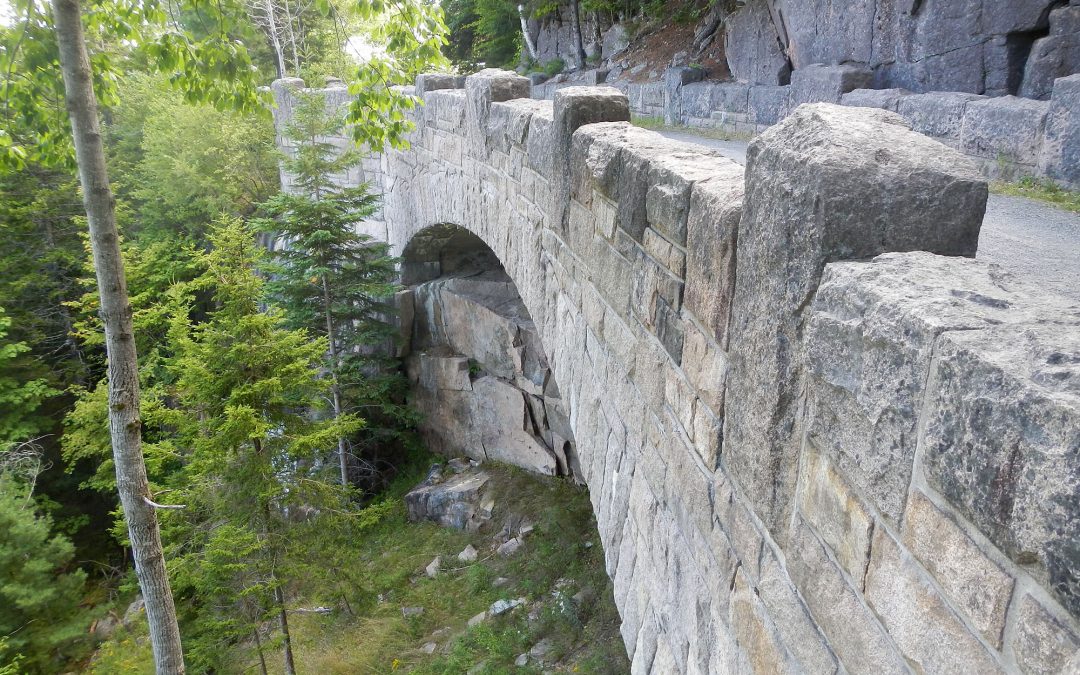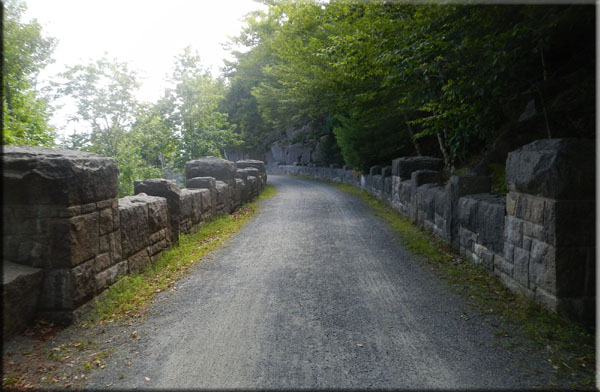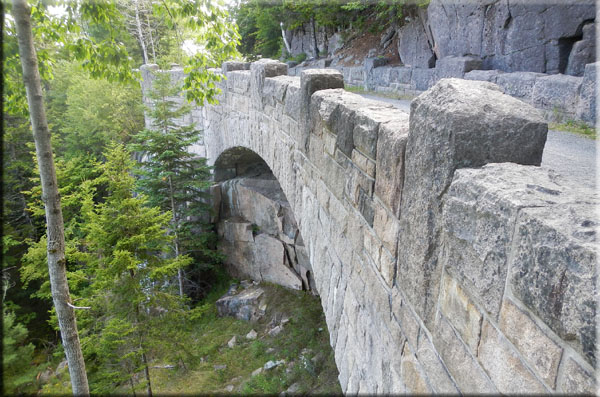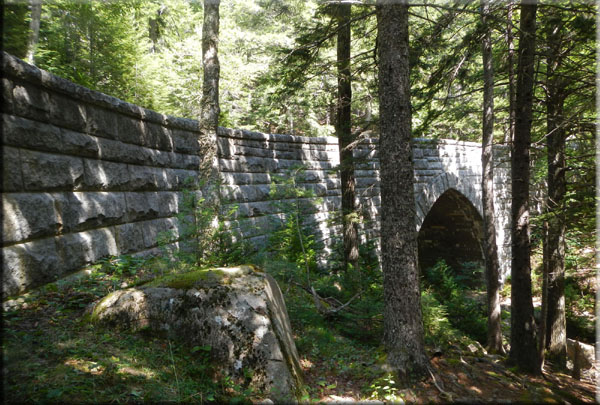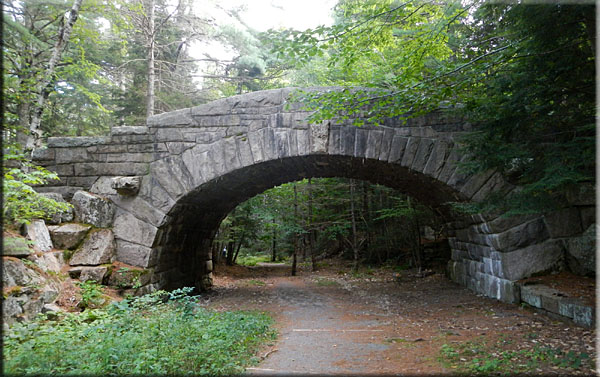Granite Bridges and Carriage Roads, Acadia National Park, Maine, USA
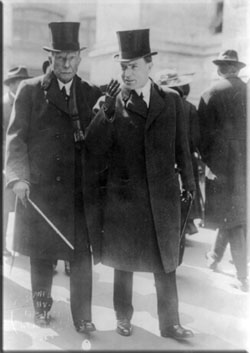 John D. Rockefeller Jr. (right), the only son of the famous founder of Standard Oil, was a celebrated American philanthropist in the early 20th century.
John D. Rockefeller Jr. (right), the only son of the famous founder of Standard Oil, was a celebrated American philanthropist in the early 20th century.
Between 1913 and 1940, Rockefeller financed and directed the construction of a system of beautiful carriage roads and granite bridges on Mount Desert Island in Maine. Rockefeller, with a well-refined sense of landscape design, built the carriage roads and bridges to blend harmoniously with the natural landscape of the island. Fortunately for us, Rockefeller donated the property to eventually become part of Acadia National Park.
The Stone Foundation 2014 Symposium was held in Acadia National Park, and I was fortunate enough to travel the carriage roads and photograph some of the bridges.
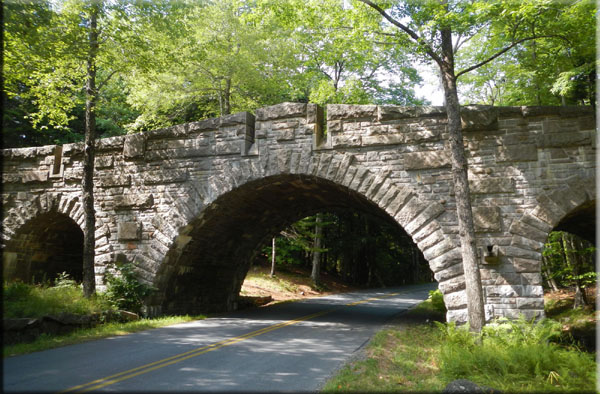
Granite Bridges
Rockefeller was deeply involved in the construction of all 16 bridges within the park. Although they are all built from granite quarried on Mount Desert Island, each of the bridges has a different masonry style. Most of the bridges span brooks and ravines; however, Stanley Brook Bridge (above), built in 1933, has a triple arch with the center arch spanning a paved road that enters the park from the south. This bridge has an almost modern decorative masonry style with protruding granite blocks and small cobblestones mixed into the ashlar field.
Carriage Roads
Rockefeller, who took great pleasure in horse-drawn carriage rides, oversaw the meticulous construction of forty-five miles of carriage roads where horsemen and carriage passengers would not be bothered by the automobiles of the day. Today the carriage roads are popular with hikers, bicylclers, and cross-country skiers as well as horse carriages. All motorized vehicles are still banned from the carriage roads.
Cliffside Bridge, built in 1932, resembles a medievel battlement crenulated with massive hewn granite blocks. The 232-foot-long bridge has a fifty-foot arch that spans not a ravine but a cliff face so the carriage road can pass without decending.
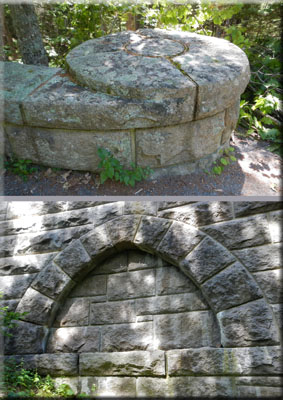 Hemlock Bridge, built in 1925, spans tiny Maple Spring Brook with a 30-foot gothic arch built into a 185-foot-long running-bond wall of granite blocks. Like several other bridges, Hemlock Bridge is decorated with detailed architectural stonework.
Hemlock Bridge, built in 1925, spans tiny Maple Spring Brook with a 30-foot gothic arch built into a 185-foot-long running-bond wall of granite blocks. Like several other bridges, Hemlock Bridge is decorated with detailed architectural stonework.
Bubble Pond Bridge, completed in 1928, has a 30-foot elliptical arch spanning a short trail that leads to Bubble Pond. The field and railing above the arch is built with rougher, more irregular granite blocks than most of the other bridges.
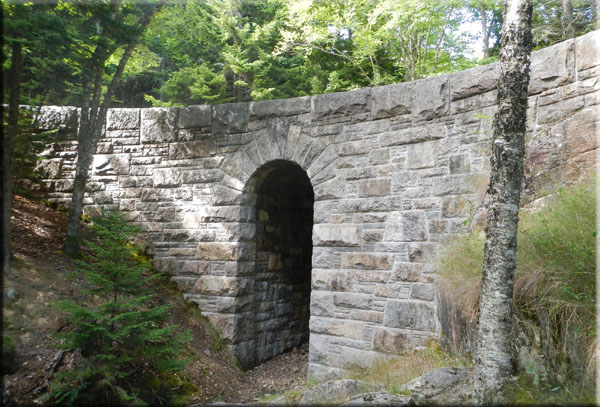
Although it is 170 feet long, West Branch Bridge, completed in 1931, has only a six-foot-wide arch, the smallest of any of the bridges in the park. The stonework in the fields consists of large ashlar blocks, some with angled head joints, separated by smaller stacked “snecks”.
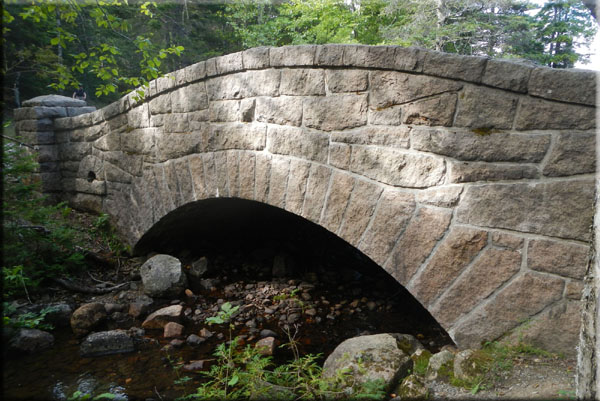
Jordan Pond Bridge, completed in 1920, has a single 20-foot arch spanning the confluence of Jordan Stream and Jordan Pond. Above the radiating voussoirs of the arch, the surface blocks are relatively rough and irregular. The bridge railings end in flattened pyramidal abutments.
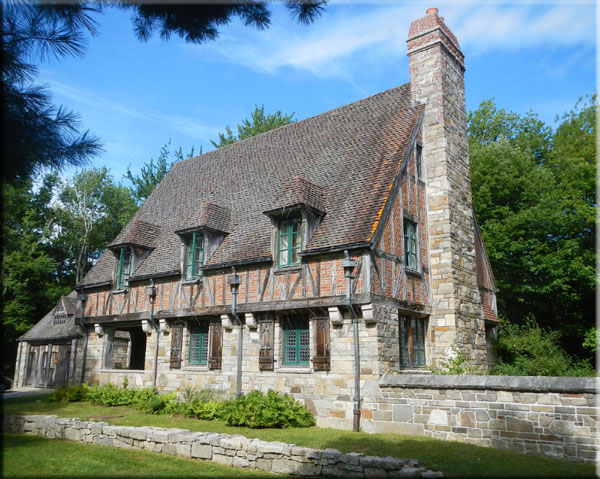
Gate Houses
Access to the carriage roads was controlled at two gate houses like the Jordan Pond Gatehouse shown at left. These gate houses, which have the architectural style of a rural French estate, were designed by New York City architect Grosvenor Atterbury. Carriage drivers rang a bell at the gate to notify the gatekeepers, who lived in the gatehouses, to open the gate and allow carriages (but not automobiles) onto the roads.

